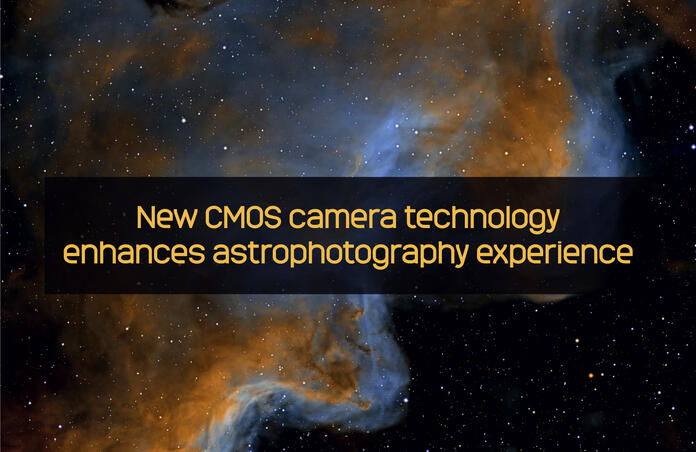New CMOS camera technology enhances astrophotography experience

Scientific imaging has constantly evolved since photographic emulsion was first used to capture images covering a wide spectral bandwidth, from X-rays to infrared radiation. Each new generation of imaging device is typically less expensive, has lower noise, and increased dynamic range compared to its predecessors. Currently, CMOS and direct electron detectors represent the state of the art for commercial equipment.
Telescope Live has recently installed the QHY 600 CMOS cameras, which have essentially negligible dark current, a massive 9576 x 6388 (61.2 MP) pixel array with 3.76 µm pixels, 16-bit resolution, and full well depths that substantially exceed those of the CCD detectors they replace. This allows for cleaner images and more efficient data collection, enabling higher throughput. Because seeing conditions typically limit the resolution of long focal length telescopes, data will often be oversampled at full resolution of the detector, and thus no information is lost with 2 x 2, 3 x 3, or even 4 x 4 binning, with the advantage that files sizes are smaller and faster to process. However, using 2 x 2 drizzle integration on a set of 9576 x 6388 images can be a painful process.
One downside to the new 4:3 image format of CMOS cameras, versus the square images produced by CCD cameras, is that resolution and optical distortion differ across the long and short axis of the detector. The rectangular format of the CMOS detectors is much better suited for viewing on computer monitors or projectors with 16:9 aspect ratios, as nearly all astrophotography images are now viewed on these devices. For imaging Nebulae, the extra real estate can make for much better images. Modern software, such as BlurXterminator, can greatly reduce distortion of stars at the corner of the images, or images can be cropped.
One major improvement with CMOS images is the absence of column defects present in archival data from CCD detectors. Telescope Live now has some compelling images in the gallery for the new format CMOS detectors, and we can look forward to many more.
